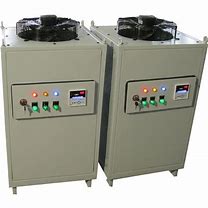HYDRAULIC OIL CHILLER – OVERVIEW
HYDRAULIC OIL CHILLER
Periodically during the manufacturing process, the hydraulic oil warms up. But as the oil warms up, its properties are lost, rendering it unusable for the process. Therefore, controlling the temperature of the oil becomes crucial to extending the shelf life of the oil. And the related machinery. This is done with the aid of hydraulic chillers, which are often connected directly to the oil supply or built-in pumps. The heated oil is pumped throughout the chiller circuit, adjusting the temperature. As transfer heat from a cold source into a liquid or gas, this chillers employ the principles of fluid dynamics.

As a result, hydraulic oil chillers use the following methods to cool machine oil:
- Installed to cool the hot oil is a water/glycol coolant. The hydraulic fluid either cools down via an installed coolant or circulates straight through a chiller.
- Hydraulic oil heats up the glycol/water coolant as a result.
FEATURES
- Highly effective but more liable.
- provides a high cooling capacity even in locations with high air temperatures.
- Uses a microprocessor-based controller of the sophisticated version “H-smart.”
- Drives with variable frequency options.
- Body of steel material.
- Very Simple Protocol Interface with BMS
- Compressor safety controllers for machinery.
- A good lubricant.
- Uses switches for water flow and antifreeze safety.
THINGS YOU SHOULD KNOW BEFORE BUY
- Operating temperature range
- Cooling capacity range
- Noise level Should below 85dB
- Condenser
- Evaporator
- Operating environment Both indoor as well as outdoors.
- Life of the machine

